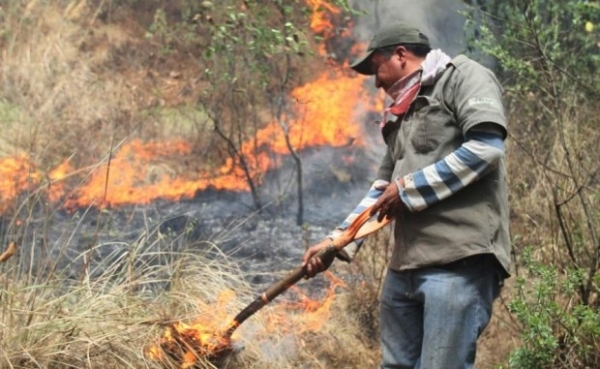Assessing Open Agricultural Burning

Under the auspices of the Clean Air Climate Coalition (CCAC), the International Cryosphere Climate Initiative (ICCI), with the collaboration of the Peruvian National Water Authority (ANA) and the regional organization CONDESAN are organizing the Andean Regional Conference "Assessing Open Agricultural Burning: Identifying Trends and Extent, and Mitigation Options to Improve Crop Yields, Improve Health and Decrease Black Carbon Emissions near Andean Glaciers". It will be in the Peruvian National Water Authority (ANA) Headquarters, Calle Diecisiete (los Petirrojos) No. 355,San Isidro, Lima 27, Peru, at February 12-13, 2015.
Under the CCAC’s Agriculture Initiative– aimed at best practices for minimizing emissions of short-lived climate pollutants (SLCPs) from agriculture—this conference also responds to broader climate change objectives focused on the Andean cryosphere and its role as a crucial source of water, as well as actions aimed at enhancing food security and better livelihoods for farmers.
The goal is reducing the use of agricultural open burning -- primarily, annual post-harvest burning of cultivated fields but potentially other agriculturally-related burning practices -- produces benefits for agricultural productivity, health and conservation of the Andean cryosphere. The goal of this conference is to identify where and why open burning occurs and assess concrete options for emissions reductions from open burning throughout the region. This Andean work has a counterpart scoping project in the Himalayan cryosphere region.
Specific Conference Objectives: (1) Characterize “open burning” in the Andean region, primarily Peru, Ecuador, Chile and Bolivia, using completed satellite mapping combined with and confirmed by national and regional expert input, (2) Raise awareness of the impacts of open burning on agricultural productivity, health and the Andean glaciers, and the general work of key regional and/or national organizations, and (3) Identify key regional actors and stakeholders, as well as develop potential partners for ongoing work.
- For more information, a draft agenda and how to register please see: http://openburningcryosphere.org/andes-open-burning-conference-lima-peru-february-12-13/

Facebook comments